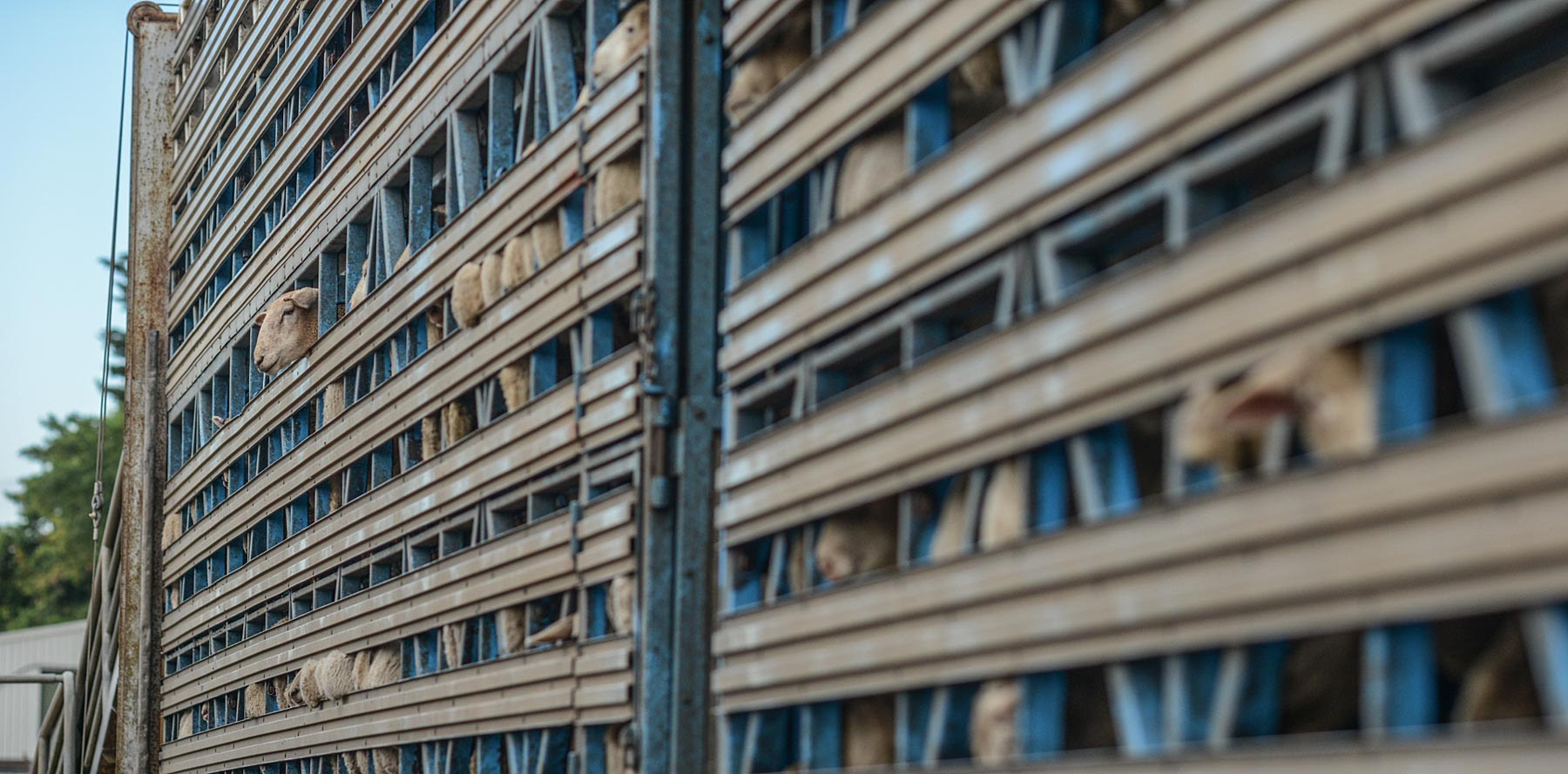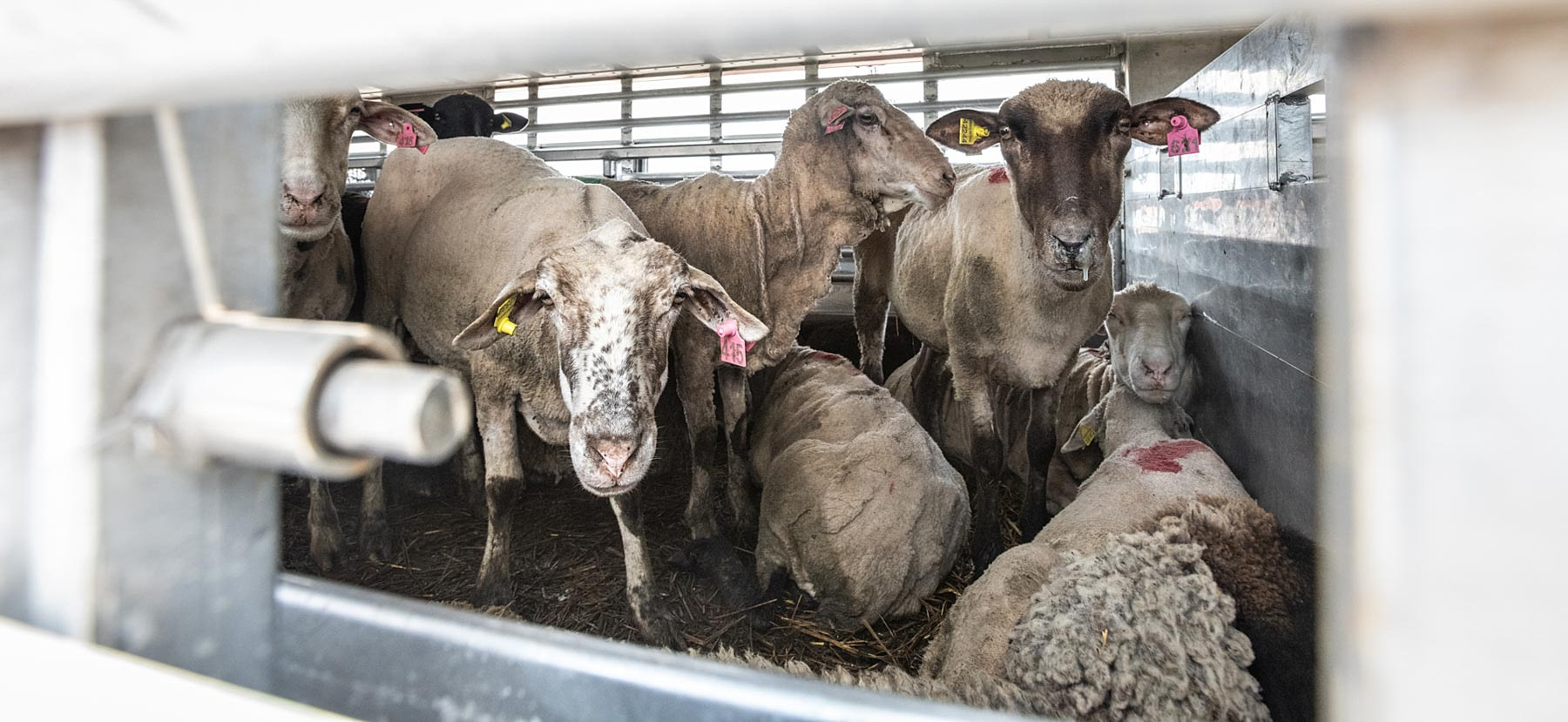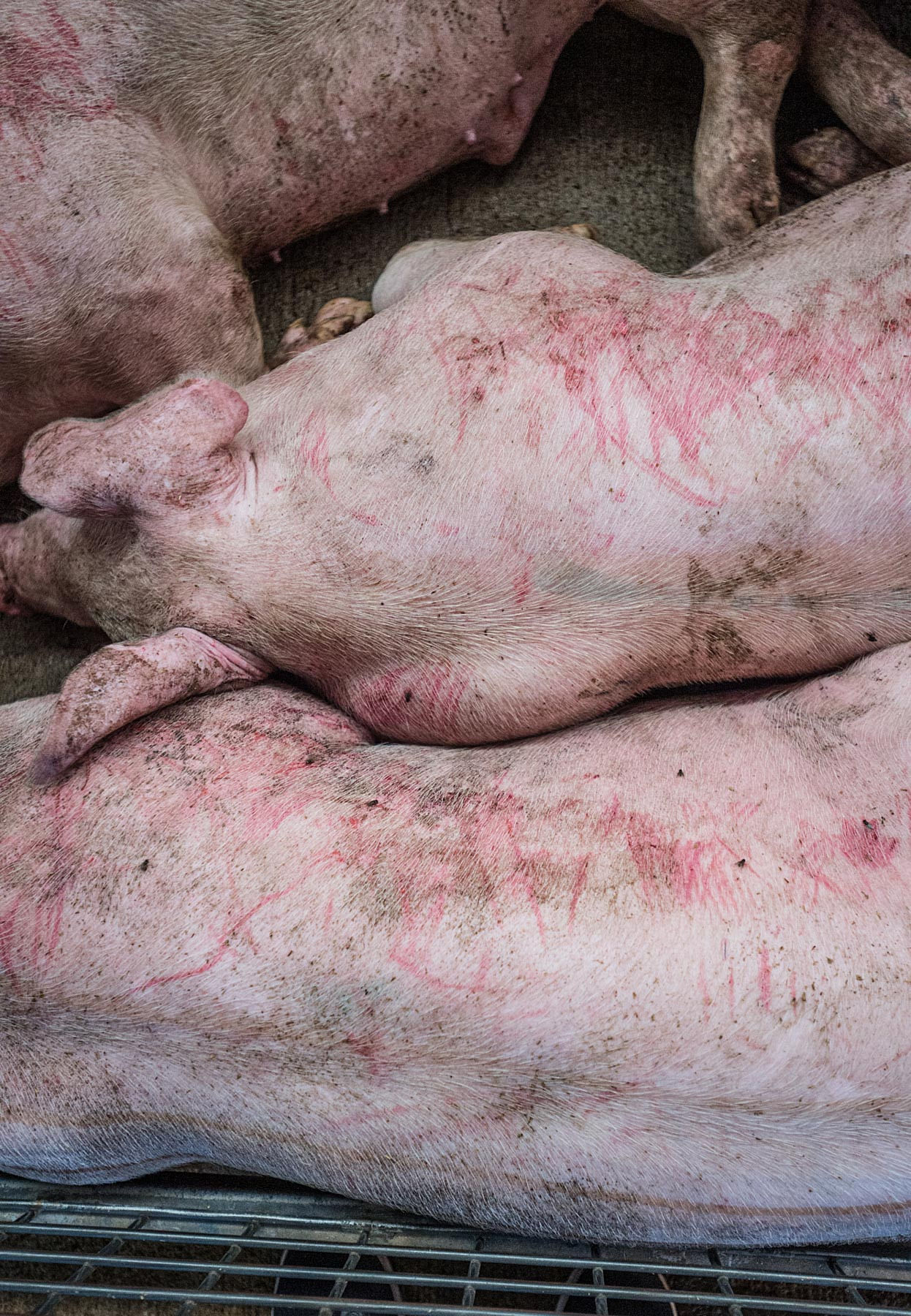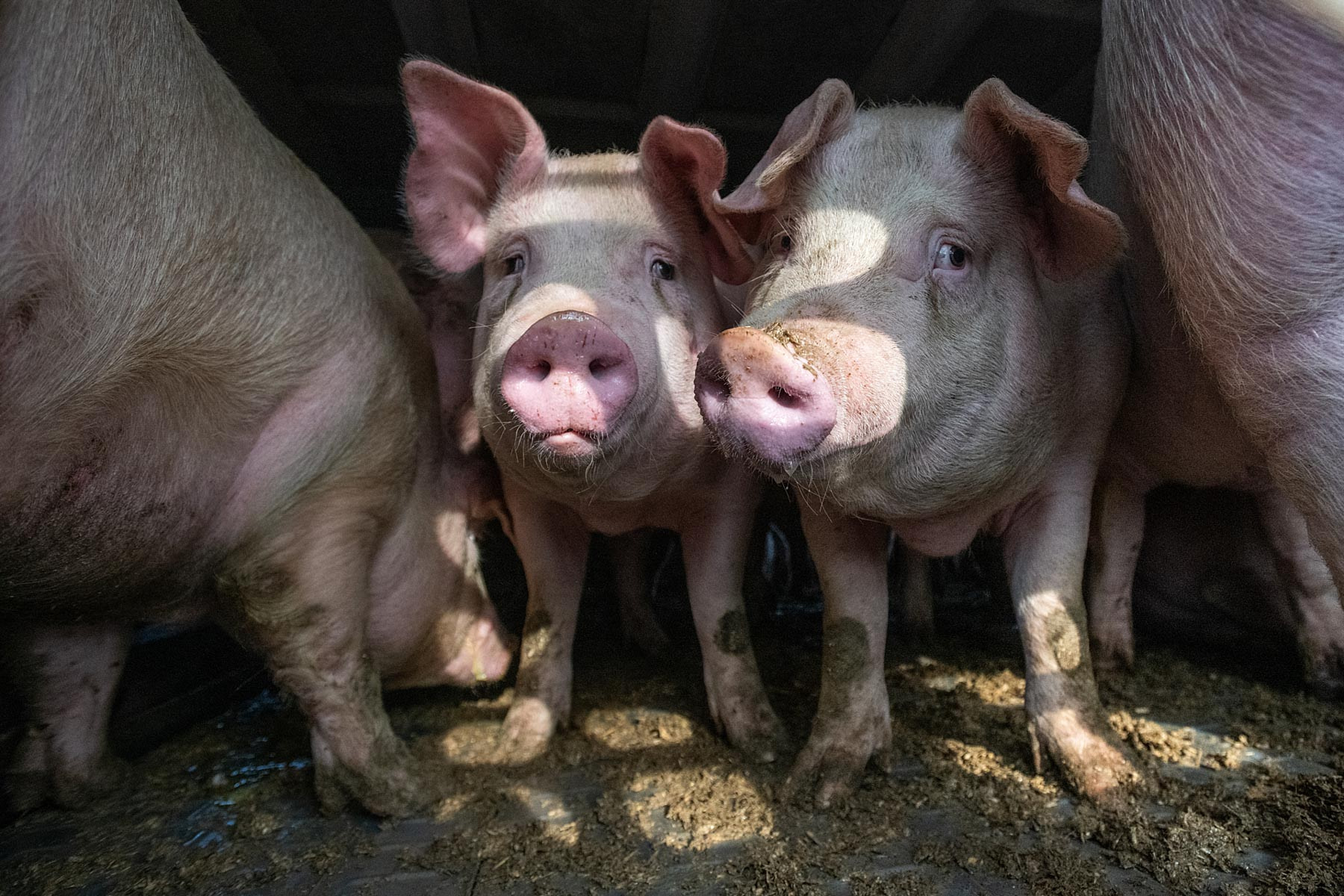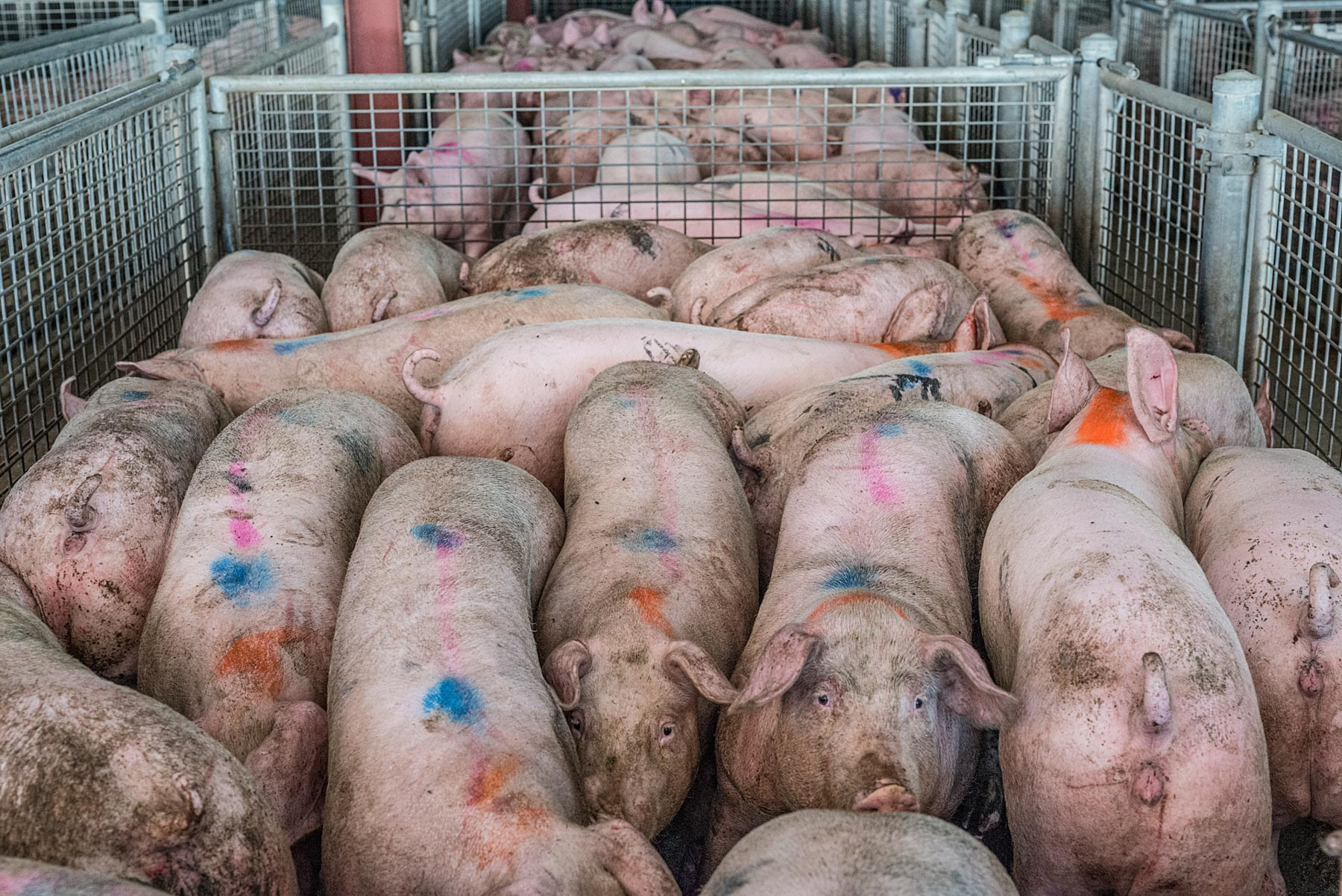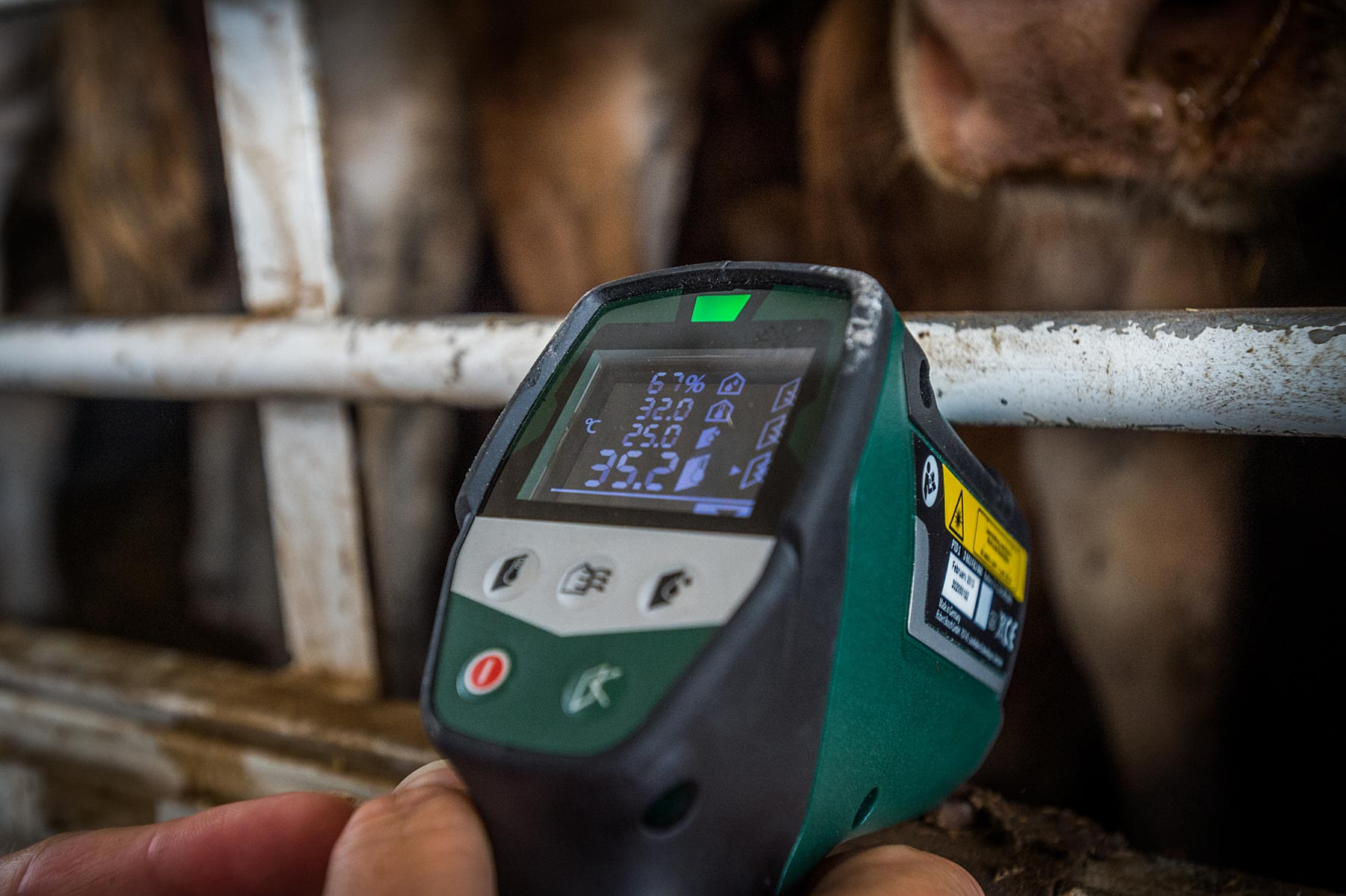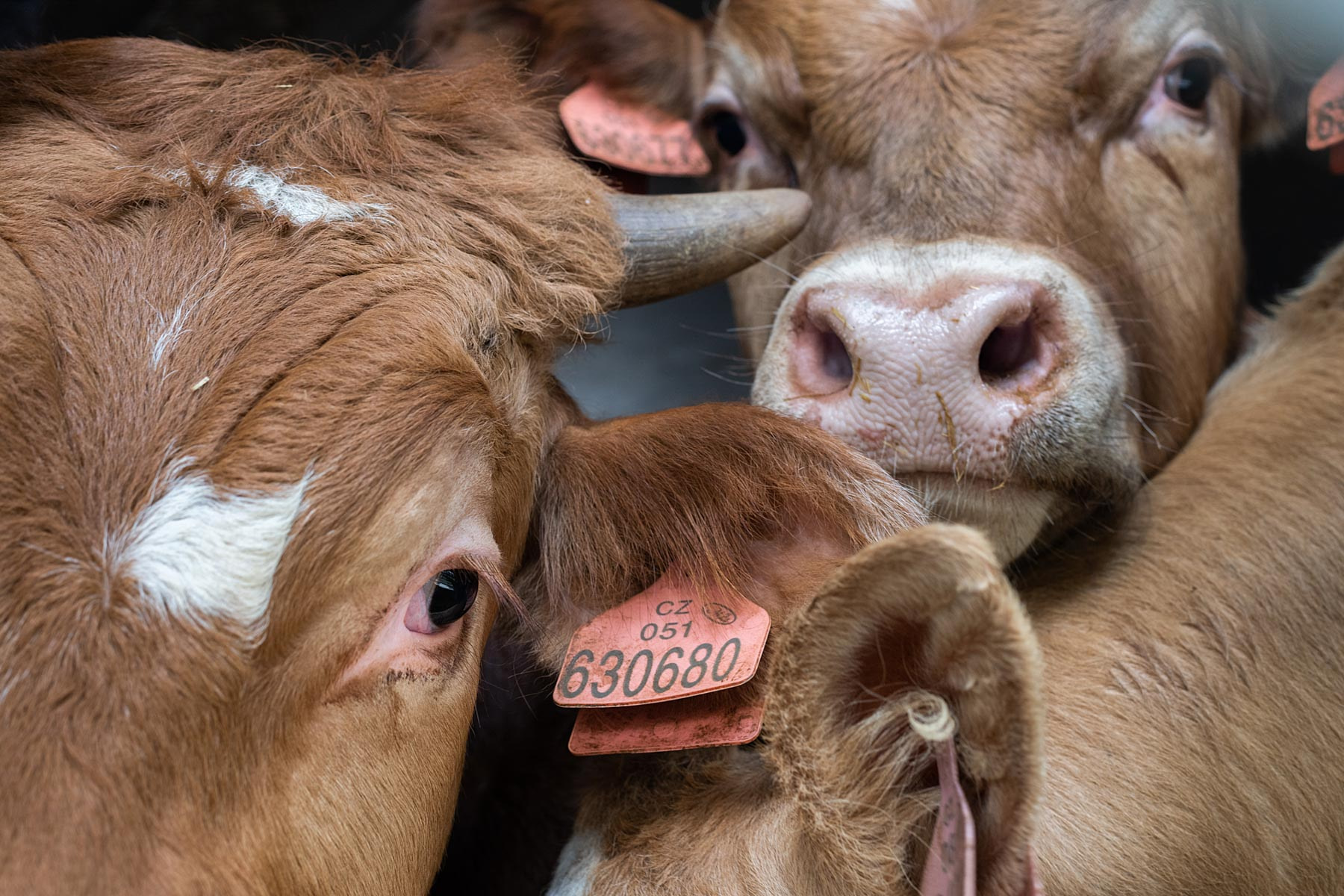A cow being transported across Europe reaches for a tree branch while the truck is parked at the Bulgarian-Turkish border. Turkiye, 2018.
Jo-Anne McArthur / Eyes On Animals / We Animals
We Animals’ Australian correspondent Anna Mackiewicz tracks live export from her homeland to the Middle East, and across borders worldwide.
If you live outside of Australia, you may not have heard of live export. Though the live export industry – the transport of live animals, usually livestock, across borders – is alive and well across the globe, it remains hidden in the shadows amongst the tonnes of animal meat being sent for consumption around the world. But way down in the southern-most section of the map, live export has been in the news for decades, and for good reason. Being one of the planet’s most remote countries, and surrounded on all sides by ocean, live export from Australia necessarily involves the transport of animals by ship, on traumatic voyages that last many weeks through rough seas.
Australia is one of the world’s largest exporters of live animals, exporting 2.85 million animals in 2017 alone. It is the leading global exporter of live cattle, totaling 1.2 million in the 12 months prior to July 2019. The majority of cows exported for slaughter go to Indonesia and Vietnam, with the majority of dairy cows travelling to China. The 1.9 million sheep exported annually travel mostly to the Middle East – including to Kuwait, Qatar and Jordan – on a journey that typically lasts about 3 weeks.
Animals transported by sea from Australia to the middle east. Port of Haifa, Haifa, Israel, 2018.
Jo-Anne McArthur / Israel Against Live Shipments / We Animals
Australia is one of the world’s largest exporters of live animals, exporting 2.85 million animals in 2017 alone.




These animals begin this long journey at Australian sale yards, where they wait in the blazing sun to be bought and sold. Once bought, those destined for export are taken on open-sided trucks to feedlots, and from there loaded onto the ships. The conditions on board live export ships are extreme, and little care is taken to ensure the wellbeing of the animals. The ships are typically severely over-crowded, as exporters seek to improve their profits by transporting ever-greater numbers. Often there is not even space enough for the animals to lie down, or for all of them to access the food and water troughs. As they travel into the blistering heat of the Middle Eastern summer, temperatures soar to insufferable levels. Without proper sanitation, animals swim in their own feces and, if they collapse from exhaustion, they drown. Broken bones and other injuries are common; disease flourishes and, with limited veterinary care, the death toll rises.
Between 2000 and 2012, over 550,000 cows and sheep are reported to have died en route, due to heat stress, septicemia and acute pneumonia.
At the other end of the long journey from Australia, We Animals’s Jo-Anne McArthur tracked the arrival of 22,000 sheep and cows on one ship named Bahijah, at Israel’s Haifa port. The smell was overwhelming. The animals, seasick and crowded together, stood in rivers of their own feces.
Decomposing bodies were strewn amongst the living. En route, the dead who can be reached are thrown overboard, and bodies commonly wash up on Israel’s beaches. Those who survive the journey will be slaughtered on arrival, or be loaded onto trucks to begin another long journey to feedlots around the country.




In the past two decades, several reports have exposed the cruelties of live export, airing undercover footage on Australian national television. In 2013, live export veterinarian Dr. Lynn Simpson made a submission to the Department of Agriculture condemning the conditions on board. In the years since, numerous other veterinarians have voiced their concerns, forming Veterinarians Against Live Export (VACE) to oppose the trade.
Australian authorities have responded to the controversies with temporary suspension of exports to a number of countries since 2003, but on each occasion the suspension has been lifted, with few improvements to legislative protection for animals. In 2011, after documentary evidence showed Australian cows subjected to horrifying cruelty in Indonesian abattoirs, the Exporter Supply Chain Assurance Scheme (ESCAS) was introduced, requiring exporters to demonstrate traceability and control through their supply chains. But in 2012, new footage showed the inhumane slaughter of 22,000 sheep in an ESCAS-approved feedlot in Pakistan. Images of sheep being violently beaten, dragged, sawn at with blunt knives, and being thrown alive into mass graves, demonstrated the failings of the new regulations, and the inherent suffering of the live export industry.
Pigs with injuries at the saleyards. South Australia Livestock Exchange, Australia, 2017.
Jo-Anne McArthur / We Animals
Though live export in other countries receives far less attention than in Australia, industries are growing around the world, including in Canada and South America. In Europe, we see the same issues arising around the welfare of animals, and the lack of accountability in live export industries. With the European Union exporting around 3.4 million live animals per year to non-EU countries, problems arise with the application of protections, and traceability of animals through the supply chain.
Pigs inside a transport truck. Fearmans Slaughterhouse, Burlington, Ontario, Canada, 2018.
Jo-Anne McArthur / We Animals
At the Bulgarian-Turkish border, animals are transported from all across the EU for slaughter in other countries. During the hot summer months, McArthur documented the animals being transported in multi-tiered trucks on journeys lasting days and even weeks. Inside some trucks, temperatures soared as high as 39.8 degrees Celsius, with animals unable to access water.
Animals transported for slaughter from across Europe through the Bulgarian-Turkish border. Kapikule, Edirne Province (East Thrace), Turkiye, 2018.
Jo-Anne McArthur / Eyes On Animals / We Animals
In response, Australia commissioned a number of reviews into the live export industry. The resulting report found that the industry was in breach of animal welfare standards and made 23 recommendations, aimed at mitigating the risk of heat stress, including a 28 per cent reduction in stocking density for voyages during the hottest part of the year in the Middle East. While this sounds like a significant reduction, in reality this additional space equates to less than two A4 pieces of paper per sheep. Other regulatory changes include the reduction of the notifiable mortality rate – the number of animals who can die before exporters are required to report those deaths – from two to one per cent.
Three dead sheep in the mud at a sale yard. Ballarat, Australia, 2013.
Jo-Anne McArthur / We Animals
In the face of expert and public outcry, this year the government placed a moratorium on the export of sheep to the Middle East for three months during the summer of 2019. The ban came into force at the beginning of June, saving 500,000 sheep the suffering of this excruciating journey.
Unfortunately, this hasn’t meant a reduction in the live export market.
With the implementation of these restrictions, companies have looked elsewhere to meet the local demand for meat. When Australia closed its ports, the same Kuwaiti company that would have shipped those animals, and has had 1.5 million Australian sheep die on board its ships, began negotiating a deal with the South African government to export up to 600,000 sheep, goats and cows annually, on a three-week long journey to Kuwait. As South Africa has no welfare regulations for live export by sea, these animals will have no legal protections.
In the meantime, the Australian moratorium on live exports was lifted on the 22nd of September, 2019, despite evidence showing that temperatures in the Middle East remain far too hot for sheep at least until the end of October. The following day, 57,000 sheep began a 14-day journey to Kuwait and the United Arab Emirates on board a ship operated by Kuwait Livestock Transport and Trading.
According to the new Australian regulations, 570 animal deaths on this ship would constitute an acceptable – even expected – number. In a country where expert and public opinion already supports an end to this cruel industry, what remains is for the government to call time on live export.
To view more images and video related to this story, please visit our Transport gallery on the We Animals Stock Site.





